Today we continue a travelogue style account of my recent trip to Namibia, with my friend Jeremy Woodhouse and his group. Of my 145 final selects, I did get around to uploading a tighter 80 photo selection to my portfolios site (and I’ll put a link into the show notes) if you are interested in taking a look. For this episode though, I’ve selected another ten favorites to take a look at.
Picking up the trail on May 10, after we left the gas station as Aus, where we’d photographed the children that we looked at, at the end of last week’s episode, we headed due north, and I started to get my first taste of Namibian wildlife, with this shot of two Oryx that posed for us at the side of the road. This wasn’t a wildlife centric tour by any means, but that didn’t stop me hoping to capture some shots like this as we traveled.
Rather than a super action-packed wildlife shot though, I really like this for the humor and composition. I found it quite funny that they both stopped almost parallel to the road, and the one on the left had a bent horn, and there was also the two bushes in the distance almost perfectly spaced as though emulating the Oryx’s positions. As I’d find later, the Oryx generally walk away from you when they see a vehicle too, so it turns out we might have been a bit lucky to have had them just pose for us like this as well.\r\n
A Word on Exposure
\r\nAs you know, I shoot in Manual mode a lot, mainly because I shoot so much in snow scenes, and I just find it easier to take control of the exposure, as opposed to messing around with Exposure Compensation, which I find totally frustrating. Unless you want to over-expose the snow on purpose to get a nicely exposed subject, like the darker snow monkeys I shoot so much, once you have your exposure set for the white snow, you can pretty much just forget about it until the light changes.
In Africa, with there being so much more neutral tone in the scenes, I’d honestly expected to shoot in Aperture Priority, also using Auto-ISO, and maybe sometimes tweaking the Exposure Compensation to keep my histogram over to the right, recording the highest quality pixels with minimum noise. As you can see in this scene though, the light colored background is really quite bright, and even when it was darker, in the end, apart from a few occasions where Aperture Priority just made more sense, I found myself falling back to what I know, and used Manual Exposure almost exclusively.
To keep my histogram to the right, I was still exposing my shots to around 2/3 or even a full stop, sometimes even higher than the camera’s meter thought the scene should be based on an Evaluative meter reading. I know a lot of people say that they prefer Aperture Priority because it stops them from having to think about exposure, but I really just use less brain cycles working in Manual.
Moving on though, I like this next shot (right), more for the story it tells of our journey. We traveled hundreds of kilometers on this type of gravel road, and although it’s pretty noisy to drive on, our excellent guides propelled us along these roads at 100km/hour speeds and more, and I never once felt concerned for my safety. The two plumes of dust you see in the distance here is a car that had just passed us, and the second car in our party.
As we drew close to our lodge for the next four nights, we passed through what would usually have been a waterhole had their been a decent rain this year, but although the lack of rain and waterholes meant much of the wildlife was scattered around, the vegetation left here had kept a small heard of Springbok close by.
My first real close-up look at the Springbox revealed them to be what I would consider one of the most beautiful antelopes I’ve ever seen, with their ribbed and beautifully curved horns, long faces and beautiful big eyes. I remember feeling totally happy as I cranked my ISO up to 2500 for this shot, made with the 300mm and 1.4X extender, and the aperture set at f/5, to nicely blur the background.
This day had been mostly a travel day, to get us close to a beautiful place in the Namib Desert called Sossusvlei. We had four nights in the delightful Kulala Desert Lodge. Most of the accommodation throughout the tour was good, this spot and the last lodge we stayed in were by far the best. Although I’d been sharing a room with one of the participants that I’d hooked Jeremy up with for this tour, I was also pleasantly surprised to find that I had a room to myself here. Well, I say room, but they were incredibly well made tents.
The windows were just strong netting, with canvas flaps on the inside, that could be rolled up to let air in to keep cool during the hot days, or rolled down to keep the cold air out once the sun went down, and the temperature plummeted each evening. There was electricity in the rooms, and a nice bathroom that all by itself stayed cool during the day, and warm at night, and I had a large complimentary yellow gecko living in my bathroom, to keep me company for the duration.
The main reason for us being in this area was to visit Deadvlei, meaning literally the Dead Marsh, aptly named because a sand dune had blocked the flow of water off to an oasis, leaving a dried up clay pan and a bunch of camel thorn trees, to provide a stark foreground for the beautiful orange-red walls of the dunes as the morning light illuminates them before it hits the valley floor. This is the place that Frans Lanting made famous when shooting for the National Geographic. The color and light contrast between the trees and dune walls is so great at dawn, that people thought Lanting’s images were paintings, or at least had been messed with, until he was able to provide a back story to explain the phenomenon.
I would end up going back to Deadvlei two days later, and we’ll look at an image showing this better later, but first, from my initial visit, here is a shot showing the sky, dune in shadow, illuminated dune, clay pan in sunlight, and the clay pan in shadow, forming five distinct bands of color highlighting the camel thorn trees. The shadow is made by the large sand dune to the left of me as I faced this scene.
The first morning was a little bit frantic, as entry to the park is limited, and we literally flew along the track down to where we’d park the car to walk the last kilometer into Deadvlei, as the sun was almost in position to start the display. I got some nice shots, but improved on them on my second trip here a few days later, so we’ll move on for now.
The sand dunes in this area really are a sight to be seen. They look pretty cool on the map too, as we can see in this screenshot from the Map module in Lightroom, the river bed punctuated with the tips of the sand dunes actually looks like an elephant’s trunk, and the mouth of the river as it opens up to the right looks like the elephant’s face. There’s even a little smily mouth. All its missing is its tusks, so let’s think of this as a happy baby elephant. On this map by the way, Deadvlei is the left-most place-marker, with the number 20 in it.
The yellow place-marker on the map is dune number 12, where I shot this next image. This is close to the tip of the dune, with a strategically place acacia tree, composed here to be almost central to the dune. You can see how I also placed the dark cap of the shadow side of the dune directly above the tree here. You can control how much of the shadow and where it falls in relationship to the foreground and the tree by moving around, and here I was literally taking my ideas for the composition from classic photos of Mount Fuji in Japan. This is why I subtitled this image Akafuji, meaning a red Mount Fuji, sometimes seen at dawn and more often at dusk, as the light of the sunset hits the sides of the iconic mountain.
Centralized or bulls-eye composition can sometimes look a little clumsy, but sometimes it just works, so should never be ruled out as a compositional tool. I’ve uploaded other shots from this spot to my portfolios site too, and you can see that the amount of shadow to the left and the deepness of the red in the sand is greatly enhanced as the sun hits the horizon. This shot is one of my favorites though, as it was early enough that the shadow of the tree was not yet on the face of the dune, which kind of spoils it just a little, in my opinion.
As I mentioned earlier, at night, the temperature in the Namib Desert drops considerably, to the point that you do indeed need those light down jackets that I showed you in the Preparation/What’s in the Bag Video that I released before leaving for Namibia. Not only is this a nice change after the almost oppressive heat of the day, but this, and the lack of humidity and light polution, presented us with the clearest view of the night sky that I’ve ever seen, and you can see here, in this photo of the Milky Way.
This is a slightly zoomed in shot, looking out across the spiral arm of our galactic home, made with the 24-70mm lens, wide open at f/2.8. Although it’s visible with the naked eye once you move away from any lights and turn off your head-lamp, I did still have to increase my ISO to 3200 and shoot wide open for 25 seconds to get this shot. The noise with the 5D Mark III isn’t worth thinking about at this ISO though, and all I’ve done to enhance this is to reduce the black slider in Lightroom to -12, and added +50 Clarity, to make it pop a little. Note that I chose 25 seconds because this is when the stars just start to elongate a little, but they still look like disks, not a failed star-trail shot.
These are actually the same settings that I used for a thousand frames on three evenings that we were traveling, which resulted in three roughly 25 second long timelapse videos of the milky way and a few other distant galaxies moving across the night sky. I haven’t figured out how I’m going to use the video yet. I’m thinking to use them as part of a slideshow of photographs punctuated with video snippets, to present my Namibia experience as a whole, which I’ll hopefully get to in the next few weeks. If that takes very long to get to though, I’ll just throw them up onto YouTube and let you know before too long. I want you to see these time-lapses because they’re pretty impressive.
After a dawn shoot and breakfast the following day, May 12, a few of us from the group took an hour out to climb dune number 17. Although pretty tiring, because you slide back half a step for every step forward you take, it was a wonderful experience. I only took my 5D Mark III with the 24-70mm lens attached, but it turned out to be a good choice.
I shot this image at 38mm, stopped down to f/14 for 1/80 of a second at ISO 100. This is one of those shots that I didn’t really think much of at first, but since returning home have fallen head over heals in love with. My initial thinking was to compose this to show the line of the ridge of the dune on which we were standing, but then show how it lead to the mid-ground, then the distant dunes, and I included a bit of the sky for balance. It wasn’t until later though that I really started to appreciate this for the textures in the foreground sand, the shadows to the left, the leading lines and then the texture and tonal variation in the face of the distant dune.
Although I worked pretty hard to get up this dune, and we walked right around, down almost into the basin, and then back up around, destroying the pristine beauty of this dune later, I really didn’t appreciate this photo until the emotion of the day had died down. Usually, if we work hard for a shot, we want to like it initially, and then sometimes they just fizzle out. For some reason, this was the reverse.
At the end of this day, we shot a different dune. Maybe number 11, but no-one could say for sure. If you take another look at the map (above) it was shot to the right of the yellow number 7, which we believe was dune number 12. A little bit further from the road than dune 12, this one presented a slightly different opportunity, with the tree starting to be buried in the sand. As the sun went down it accentuated the ripples in the foreground, although they were messed up to a degree by the shadow of another tree.
The wind got up a little too, blowing sand off the ridge of the dune, which was also illuminated by the sun against the darker shadowed background. There was also a beautiful illuminated tip that I placed in the top left of the frame, kind of balancing the image out, with a patch of bright orange in both the right side and this top left corner.
Next, here’s a shot from the porch of my lodge, with the moon rising in the sky with venus, as the last light of another day faded along the horizon. I always find it interesting to see that you can sometimes see the part of the moon that is usually dark, especially in such clear skies as we had in Namibia. I played with this scene for a few frames, but found that when I exposed for the bright part of the moon, the part in shadow and the faint light on the horizon disappeared.
I toyed with the idea of shooting one image for the bright part of the moon, which would be quite a fast exposure, as it’s basically just reflected sunlight, then masking it over a second shot, showing the darker part of the moon and the horizon. Then I started to wonder if I could use the brightness of the moon to create a sunburst effect. Because I was shooting at 70mm, I knew I’d have to stop down some to create the effect, so I went to f/11 and increased the ISO to 800, to give me a shutter speed of 8 seconds. I didn’t want to go any longer than 8 seconds, because if I’d gone longer at this focal length, I’d have started to see too much movement in the moon. You might have to click on the photo to view it at its largest, but the result is a very definite and quite pleasing moonburst, so I was happy with that.
The following morning, I got my second crack at Deadvlei. I’d actually booked on a balloon flight, which I was quite looking forward to, but I hadn’t been told that the other option was a return to Deadvlei, but luckily, I was able to cancel the balloon trip, and we headed out a good thirty minutes earlier than before, with special permission to get into the park early.
I’d studied my images from the previous trip, and although I was happy with them, I had a few ideas that I wanted to work on with my second chance. Remember that I don’t study other peoples’ photographs before trips, as I don’t want to spend time looking for scenes that would exist in my head. I did recall the Lanting photo that I’d seen a number of years ago, but my memory wasn’t clear enough to spoil my creativity. This time though, I’d got my visit of two days earlier in my mind, and some ideas that I wanted to work on, and I recall spending a quite frantic 20 minutes or so rushing around the clay marsh basin, looking for my angle.
I’d over-thought the scene on my first visit, and really wanted something very simple. I prefer to have the trees fully included in the frame, not cropped off, and this can make finding a good spot difficult. I finally settled on a spot just to the right of Jeremy, and found three trees that I could isolate, and that had a relatively clean background. As you can see in the resulting image, there is a little clump of vegetation on the horizon line, and a bump on the right edge of the frame which I’d have liked to not be there, but I can live with them. You can see here though, how the timing is crucial, so that you get a line of illuminated sand as a backdrop, but then a perfect line of darker shadowed foreground at the start of the clay pan.
The interesting thing with this composition is that after all my deliberation, when I got home and looked up Frans Lanting’s famous shot again, I see that the left two trees in my shot are the two right-most trees in the Lanting shot. Whether he was aware of it or not, Jeremy was probably shooting pretty much exactly the same shot as Lanting. I haven’t seen his photos yet, but I’m curious to see what he came away with. Either way, I’m very happy with the results of my second visit to Deadvlei.
I actually have a stash of new Breathing Color papers sitting next to me as I write this, and I’m looking forward to making time later this week to profile these papers, and print this, and a few other favorites from Namibia, to see how they look. These are actually new papers and canvases to the Breathing Color line, so I’ll let you know how they fare once I’ve finished this travelogue series. This episode actually puts us at almost half way, so I reckon we’ll be running for another two weeks, possibly three, but I know some of you miss the travelogue style episodes, so hopefully this is worth doing.
I’d also like the mention that the music we’re being played in and out with for these episodes is used with kind permission from the staff of the Kalula Desert Loge, where we stayed for the four days while in the area we’ve looked at today. Every other night they sang and danced and mesmerized their guests. Another amazing experience that I won’t forget in a hurry, especially with the help of my iPhone video from which I took the music.
We’ll sign off now for this week though, and I’ll be back next week, as we pick up the trail with a little more wildlife, and some photos of the intriguing and beautiful Himba people. Remember, my best 100 shots from the trip are now uploaded to a portfolio page here.
Show Notes
Martin’s Namibia Impressions: https://martinbaileyphotography.com/portfolio/namibia/
Music used with kind permission from the staff of the Kulala Desert Lodge.
Subscribe in iTunes for Enhanced Podcasts delivered automatically to your computer.
Download this Podcast in MP3 format (Audio Only).
Download this Podcast in Enhanced Podcast M4A format. This requires Apple iTunes or Quicktime to view/listen.


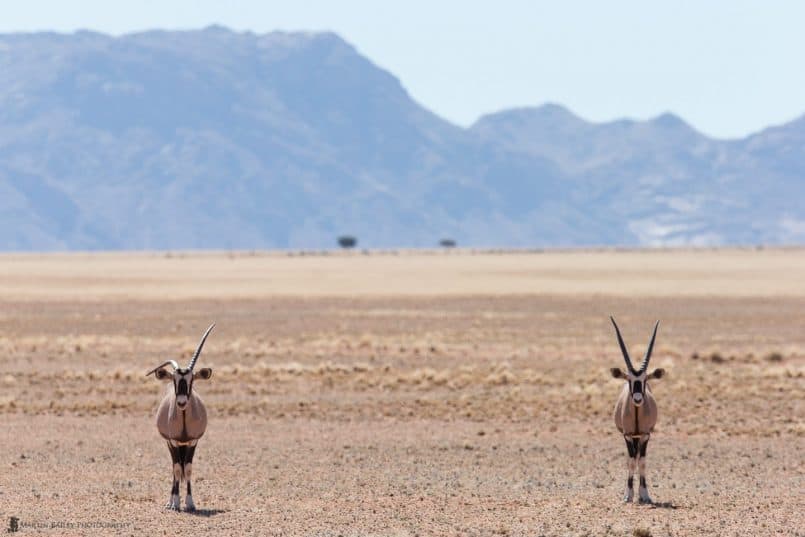
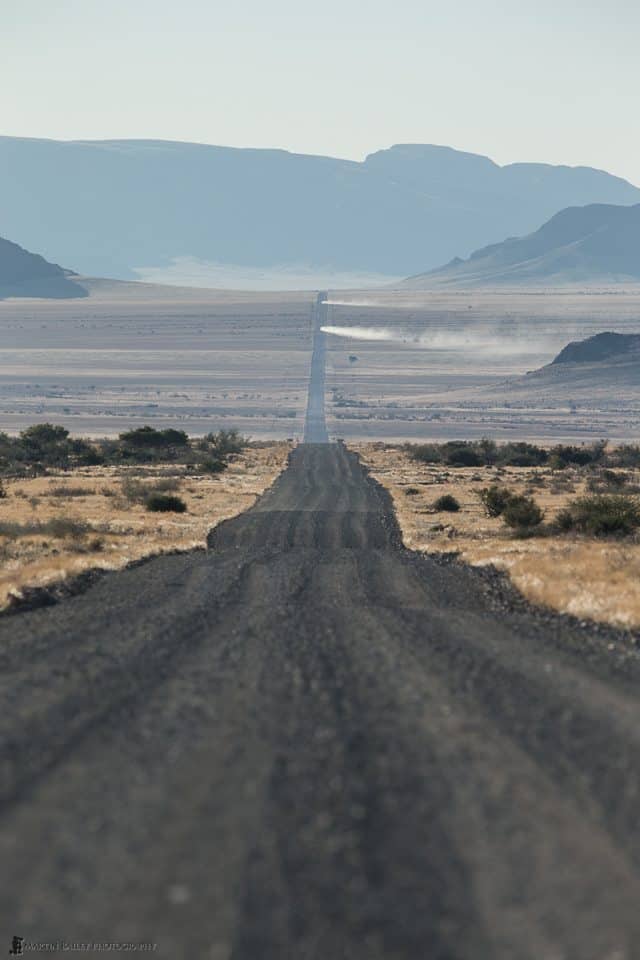

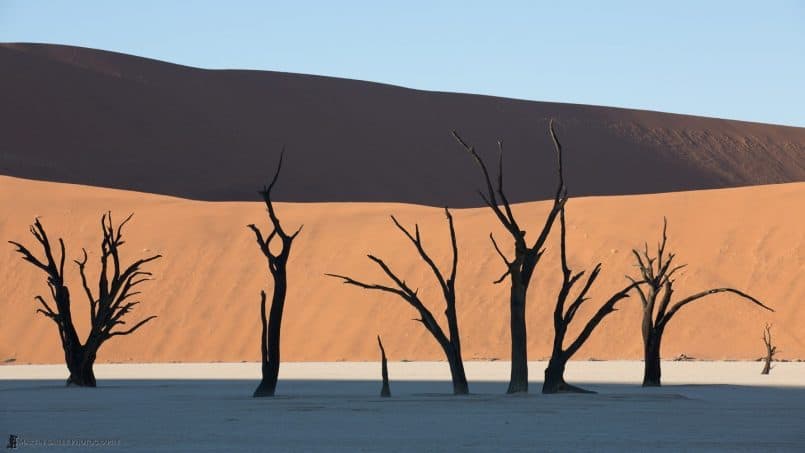
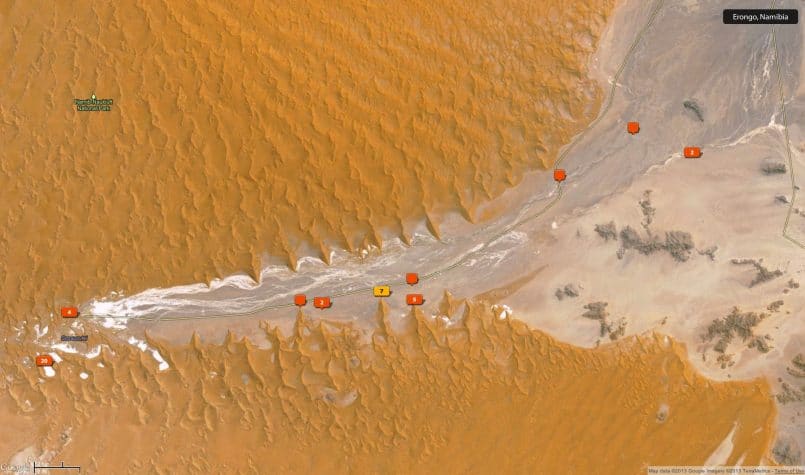

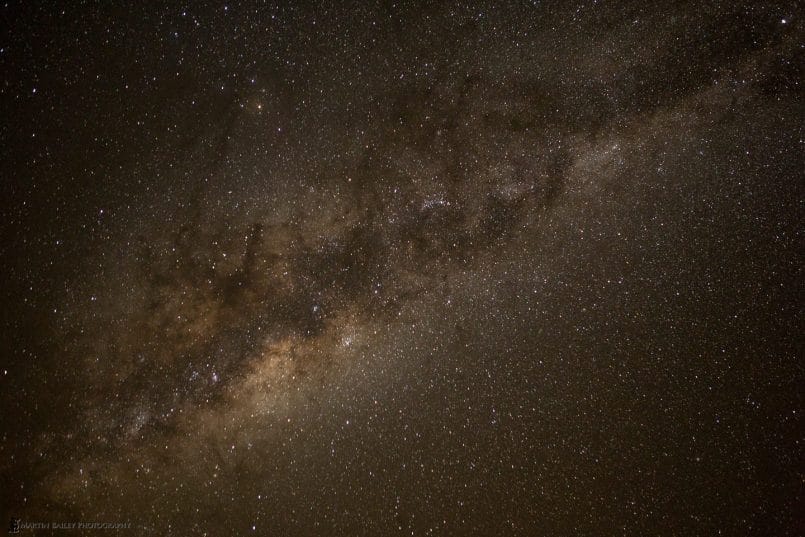

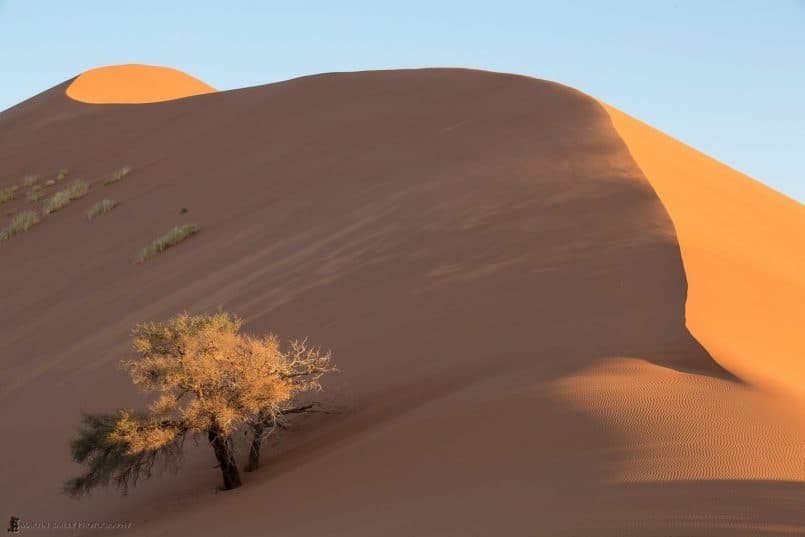
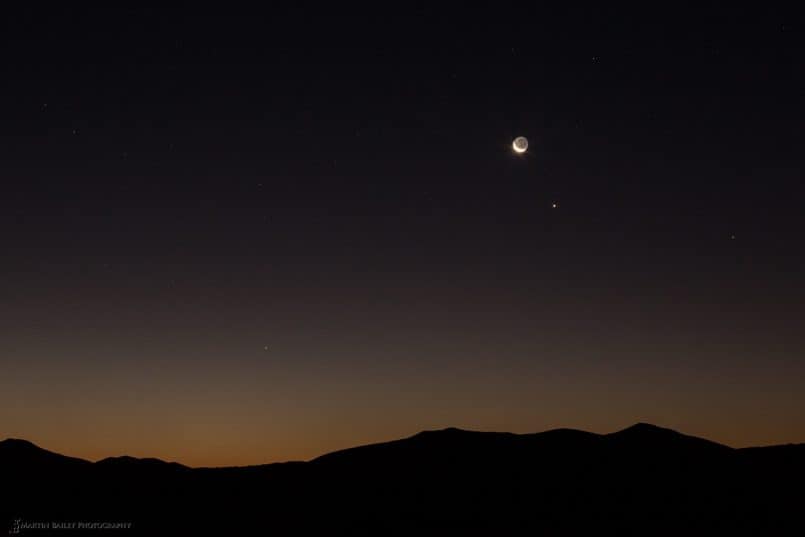
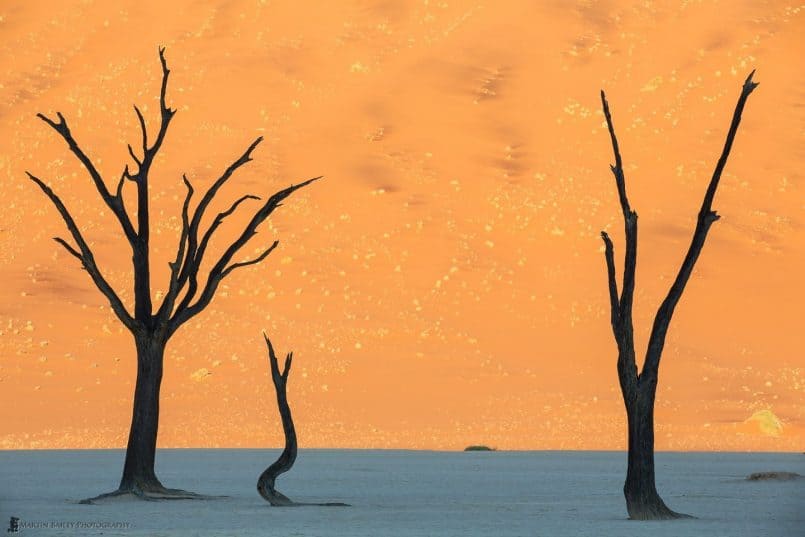

Great Photo’s as usual Martin!
Thanks Tammy! I hope all is well.
Awesome pictures as always. I am sure it was a great trip to Africa.
Thanks Franklin! It was totally awesome!
Those are amazing images. I love the almost high key/low contrast effect on the single Springbok and I am drawn to the simplicity of the Deadvlei Silhouette image – beautiful composition.
Thanks Andreas! I’m pleased you liked these. Thanks for taking a look!
Love the Deadvlei Silhouettes image from morning no. 2. I also like your image of the camel thorn trees backlit with their shadows. You haven’t talked about that one yet. Slightly different color palette than I’m used to seeing from Deadvlei — if it Deadvlei. It would be interesting to see that scene from a slightly higher perspective. Guess you didn’t wedge a ladder into that giant North Face duffel bag. It looks almost big enough…
I’m curious if you are using a polarizer for these Namibia images. (Not just the two I’ve referenced but in general.) If not, I’d be interested to know why.
Your point about not searching out other photographs of a location ahead of time is an interesting one. I’d never considered the downside to doing so. I tend to do just that and I do find that I am occasionally captive to a particular compositional idea because of it; or preoccupied with seeking out a particular perspective rather than being completely open to what is in front of me. On the other hand, there are times when I’ve missed opportunities that were only minutes away because I didn’t do enough research. I’ll have to reconsider the pros and cons.
As always, thanks for the great work you put into these podcasts.
Hi Tim,
I probably won’t talk about that backlit camel thorn tree. Do you mean this one?
http://www.martinbaileyportfolios.com/wp-content/uploads/2013/05/MBP_Namibia_20130511_2357.jpg
If so, that was Deadvlei, once the sun was high enough to hit the back dune. It’s just a 180 degree turn from most of the other trees I shot there. If it was another shot, please provide a URL so I can comment.
I didn’t use a polarizer for any photos in Deadvlei, and only used it once for one of the dune with tree shots. I just don’t use them very much.
You’re right of course, that not researching locations can be dangerous in that you could miss something that you just weren’t aware of. I generally live with that, and learn by it. My thinking is, I should have a good idea of what is in the area just from looking at photos over the years, but if I miss something big, I just kick myself for not finding it, and add it to the list of stuff to shoot on a return visit. I just like to test my own eyes and vision, and remove those paralyzing preconceptions.
You’re welcome for the Podcasts. Thanks for listening/looking!
Martin.
Yes, that’s the one to which I was referring. Really nice shot.
When you say that you just don’t use polarizers much, is it because you don’t really see a benefit or because of the hassle? I ask because the light you’re getting in Africa seems very bright and harsh outside of the golden and blue hours. I would think a polarizer would help to bring back a little bit of contrast and saturation — at least when the sun is at certain angles relative to your composition.
To be clear, I’m not at all trying to be critical of your images. As I ride along virtually with you through this amazing country I find myself wondering how I would deal with the reality that most of the day is spent in less than ideal light and the first thought that occurred to me is reaching for a polarizer.
FWIW, the second thought that occurred to me is going with a sepia tone in post processing — exactly as you did. I don’t think you need to apologize for doing so. I wasn’t aware of the photographer you referenced as you introduced your first sepia-toned image in part 3 but I’ve always considered this a good option when dealing with harsh light. It’s never occurred to me that it’s a style that belongs to one individual. Just my opinion, of course.
No, I just don’t really see the benefit. I tried the polarizer a few times, for the reasons you say, but it really didn’t do much, and wasn’t worth the hassle. Sometimes it did help to bring out the red in the sand, and I used it then, but otherwise, left it in the bag.
I actually don’t think the light was that harsh for most of the shots I’ve selected. Do you have your monitor brightness up high? Remember I process everything with my monitor calibrated, both for color and brightness. This sometimes makes other think they are high-key, when they really aren’t. There were some harsh shadows of course. The sun is very strong in Namibia, but if that’s what you’re seeing, that’s what it looks like. I just live with that. 🙂
I rarely go to black and white or sepia to overcome harsh light either. For me, it’s usually when the color get’s in the way, or doesn’t add anything. Or when I know even when shooting the image that it will work better in black and white. If I think the light is just too harsh, I don’t take the photo.
I hope this doesn’t sound defensive. I don’t mind the comments at all, but I really just don’t see any images where the harshness of the light is distracting to the point where I’d need to do anything about it. Maybe it’s just me. 🙂
I think you know I’m a huge Martin Bailey fan. The last thing I intended to do is offend you or provide some unsolicited critique of your images. So, having said that, let me see if I can make things worse…
First, thanks to your review my monitors are all calibrated with i1Profiler using an i1Photo Pro 2. And I should add that I appreciated that particular post far more than my wife did. : )
It isn’t that that your images look high key or that the light is distracting. It’s that the light is sometimes less than ideal for all the reasons you mention. To be clear, I’m critiquing the light, NOT your images. Take, for example, the image of the two Oryx along the road. I think that’s a great image. I find it interesting. It has a sense of humor about it. (I love the bent horn and how the Oryx on the right almost looks like it’s a fat creature on two legs!) And it gives a great sense of what it was like to be right there at that moment in time. On the other hand, I find — personal opinion only — that the light is less than ideal. I would describe it as harsh. The sun is almost directly overhead. The light is bluish and a little hazy. When it popped up in the podcast I thought to myself, “I wonder if Martin used a polarizer on this trip and if he found that it made any difference shooting in this type of light.” Of course, in this shot it wouldn’t have.
As far as the sepia approach goes, I completely agree with your reasoning. I described it as one remedy for harsh light, but the reason I consider it as such is because it addresses the bluish haze that often develops as the angle of the sun increases. I find in my own images that toning an image allows me to capture images that I am happy with farther into the day.
http://tlinn.com/images/travel/north_america/ca/death_valley/2008-12/death_valley_2008.htm?ssm=11
No, no, no Tim, you haven’t offended me at all. I appreciate the comments. I just didn’t want to sound overly defensive, that’s all.
Now, I do need to reiterate though, that I’m talking about the brightness of your monitor, not just the calibration. Do you have the brightness turned down to probably around half, or less, as instructed by the calibration software? This is not always obvious, and rarely done, which leaves most people’s monitors way too bright, even if they’re calibrated.
I’m with you on the Oryx shot. The light is certainly less than ideal there, but it is what it is. A polarizer wouldn’t have helped, as it was hazy and dusty, but really, that’s how the scene was, and how I want to remember it. The light is harsh at that time of day. Of course, it would have been great if they’d done that at dawn, but for that sort of shot, it doesn’t bother me that it was mid-day. In fact, I quite like it. It reminds me of how hot it can get during the day. We don’t have to try to correct everything, in my opinion.
Great shots in your slideshow there. It was running automatically, so I’m not sure if it was to illustrate your point, but there were a few shots, like the one with the tree and shadow, where I can see it was hazy. The sepia doesn’t hide that, it’s just not blue. It’s a beautiful shot still, haze and all. That’s what happens at that time of day, and to me, I really don’t think we necessarily need to try to hide it.
I guess I actually think there is too much stigma attached to “bad” light. I avoid it when I can, but when I can’t, I work with it, and live with it.
Please don’t apologize for your comments Tim. I know your intensions are good. If I didn’t, I’d delete or ignore it. We’re talking because I respect your views. 🙂
Good points all, Martin. At my editing station at work — I’m a video editor by trade — I set brightness to 80 cd/m2. But that workspace is pretty dark. At my home office I keep the room a little brighter so I use 100 cd/m2. How bright do you keep the monitors in your workspace? (I have your terrific ebook, Making the Print, but I don’t recall if you provided specific recommendations. An illustration showed a monitor set to 80 cd/m2.)
As far as the slideshow goes, it was only the one shot I intended to reference. I can link to a specific shot in the middle of the slideshow but only the viewer can pause it there. : ) Thanks for your kind comments. It’s hard for me to look at older work but I will admit that I am very fond of the specific shot I linked to.
I’m not sure what I set mine to without checking, but I’m instructed to set it quite low by the calibration software. My MacBook Pro is usually around 50% of the brightness scale, and my Eizo monitor in my office is around 25%.
I think I saw the photo. They’re all very nice anyway.